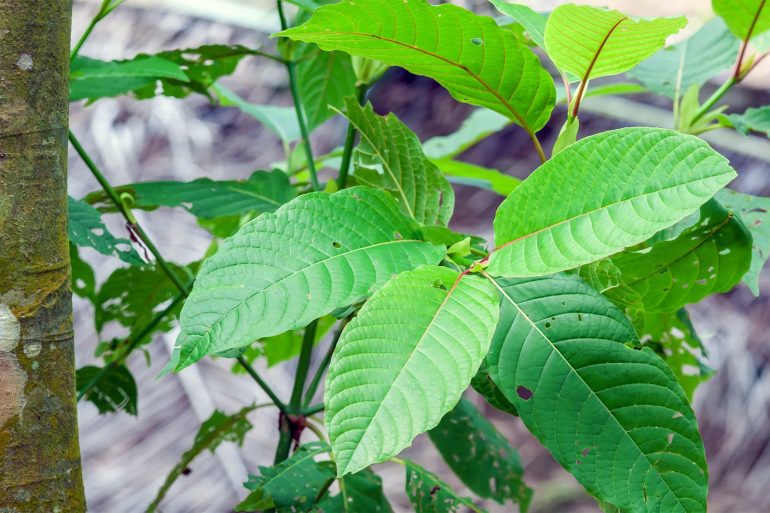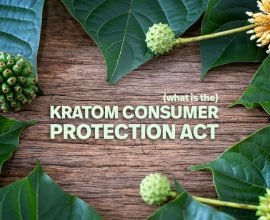Everything we consume and put into our bodies contains various substances that form one product. Alkaloids are an example of a topic that is rarely studied in depth.
Although alkaloids can be found in many items like drinks, food, and medicines, that doesn’t mean they’re common knowledge to the general public. It’s more usual to see the alkaloid identified with a specific name instead of what it is.
Kratom comprises a range of alkaloids. It could be interesting for you to find out the nature of these alkaloids and where they’re located, and how they function to help you better comprehend the Kratom plant.
Alkaloids as organic compound
Organic essential compounds, such as the alkaloids in our discussion, contain at least one nitrogen element. They also contain sulfur, carbon, oxygen, hydrogen, chlorine, phosphorus, and bromine. Because the cyclical nature of alkaloids isn’t required to determine their classification, the various structures can overlap with amino acids, amines and proteins.
Its biological purpose makes it different; however, some scientists are still debating and arguing that alkaloids should be considered a subtype of an overall organic compound. This debate, which has been going on for a long time, could change how alkaloids are classed soon.
Biological Properties of Alkaloids
The compound is not used for any specific function. It is found in fungi, animals, bacteria, and even plants. They are typically secondary metabolites, meaning they don’t serve the essential functions of life, like growth, development, and reproduction. But the effects triggered by alkaloids could undoubtedly improve the living conditions of those affected, resulting in long-term benefits. In certain instances, the function of an alkaloid or the reason behind its existence is not known. As time passes, as research advances, we can find answers to these mysteries in the near future.
The apparent fact is that alkaloids bind to various receptors within the body—the location and alkaloids are bound to depend on how the alkaloid’s structure is laid out. Every alkaloid reacts with an individual organism differently since each one has its design and structure and a binding configuration. This means that every alkaloid must be examined to understand precisely what it does and can perform.
Where Alkaloids Are Frequently Found
The first time you hear about alkaloids, you may believe that you’ve never experienced them previously, but that’s probably not the case! You’ve consumed an alkaloid if you’ve ever had a caffeinated drink. Caffeine is an acid produced by a variety of different plant resources, with the most well-known being Coffea arabica or coffee! Tobacco cigarettes contain nicotine, which is derived from Nicotiana tabacum. It is a painkiller that includes codeine and morphine, both alkaloids. They are derived from Papaver somniferum, sometimes referred to as poppies!
These are only some of the places where alkaloids are present in nature. Each animal and plant has one type of alkaloid. Certain alkaloids have efficient effects, while others have very minimal effects. This is why you may not know the number of alkaloids, with only a handful of them having well-known names and applications beyond the scientific or medical community. It will be fascinating to observe how alkaloids derived from plants are being studied. There are a lot of them that will be used for medicine, which we’ll talk about more in the next section. Some of them could even be the reason some foods taste so good!
Alkaloids Have Medical and Societal Applications!
The fascinating aspects of alkaloids are their uses. They are widely used in food, medicine, and industrial products.
Alkaloids were first utilized as a clinical drug in the 1800s. Even in the present, they are still seen on the shelves of different medications. In particular, the following alkaloids can show up in medicines due to particular effects they could cause:
* Morphine (analgesic)
* Nicotine (stimulant)
* Tubocurarine (relaxant)
* Yohimbine (stimulant)
* Reserpine (antihypertensive)
These are only a handful of the numerous medical uses of alkaloids. With the discovery and study of further alkaloids, it is feasible that alkaloids will aid in the development of more distinctive and valuable meals and medicines.
What Is the Connection Between Alkaloids and Kratom?
You may think that we are discussing alkaloids in such detail. Our interest in alkaloids came about because there are numerous alkaloids in kratom, including mitragynine and 7-hydroxy-mitragynine, which are the plant’s two primary alkaloids. Mitragynine is found naturally in large quantities and is the plant’s Latin name.
That’s why kratom dealers like us provide the number of alkaloids in their products containing kratom. The amount of kratom present in the form you choose could cause the way your body reacts to it.
We were interested in learning more about the larger category of alkaloids so that we can comprehend what these chemical compounds are and the way they’re constructed. Through knowing more about alkaloids, we’ve discovered more about Kratom. We’re here to give anyone interested a little bit of that information. This blog is about! If there’s a particular topic you’d like us to tackle to help you learn more about it, please contact us anytime. We’re always eager to conduct some research to be better-informed vendors and then impart that knowledge to our customers just like you.





